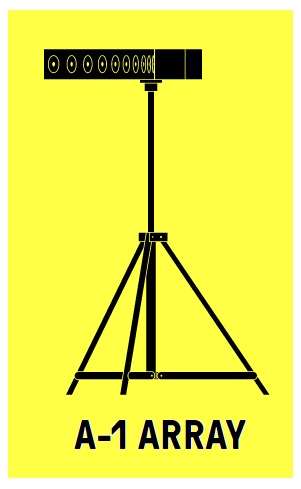Future Posts For PDH Will Be On DHMN Civic Hacks Blog, Not On Events Wrangling
tl;dr — Three of us met and discussed the Personal Digital Home project for 3 hours on July 30. We decided:
[If you’re not familiar with the Personal Digital Home project, it is “the starting point for your digital life.“ The PDH concept is essentially One Site To Rule Them All, your data storage shed, control panel and cyberspace digital presence. A PDH website is intended to let you Own Your Data, give you more control your presence in the metaverse, and make you more effective at interacting with all things digital. Two other projects closely related to PDH are IndieWeb and The Decentralized Web initiative.]
July 30 Meetup Summary
Three NE Wisconsin TIME community members met on July 30, 2016, from 1 – 4 PM CDT at Tom’s Drive In on Westhill Boulevard in Appleton, Wisconsin, USA, to discuss and work on the Personal Digital Home (PDH) project. This post is an overview of the July 30 meeting.
I had proposed an agenda for this meetup, but we pretty much ignored it. This was Chris’ first exposure to PDH, so Mike kicked off the meeting by explaining to Chris what Mike’s understanding and vision of the project is. Unfortunately, I can’t repeat here what Mike said, so for now only Chris and I got the benefit of how Mike sees PDH.
[At the next PDH meetup, I’m going to record Mike (and others if they’re ok with that) when they paint a picture of what PDH means to them. Then I’ll put that in cyber-writing, and we can refine the descriptions. That will help us see what the commonalities are between people working on the project and how each one aligns with the big picture I’m working to solidify for PDH.]
To me, Mike’s description of PDH sounded pretty close to the IndieWeb project, with a strong emphasis on OYD (Own Your Data) and POSSE (Publish (on your) Own Site, Syndicate Elsewhere). So I expanded on what Mike said and explained that PDH is intended to help people better manage all their digital “stuff” online and offline now and twenty years from now when people’s lives will be even more digital than they are now. That means it will include things like:
- Your own website (using a URL or domain name you registered for yourself ).
- The POSSE content you create, e.g. for Twitter, Facebook, other social media, blog posts, Google Docs, photos, etc.
- A reliable, secure, and private backup system for all the digital data you don’t want to lose.
- A portfolio or repository for all your education, learning, knowledge, and expertise.
- An umbrella site for all your ventures, side gigs and residual income streams.
- Whatever other digital components your life has (or pointers to those components if they are under your control elsewhere).
Think about your digital and online life ten or twenty years ago. Then think about how much more digital, cellular and internet-connected you are today.
NOW — extrapolate forward twenty years. The concept of PDH is to be the digital interface you’ll want to have twenty years from now, when even more of your life is locally-networked and internet-connected via cellular, WiFi, and other wireless or wired protocols, blending reality, augmented reality, virtual reality, holography, wearable computing, robotics, and other digital-life tools that haven’t been imagined yet.
After Mike and I told Chris how we see PDH, he asked a few questions, then we started talking about different components of PDH and how the overall concept might function. That was sort of Talking Point 1 on my agenda, or at least part of it. Mike and Chris didn’t have an interest in talking about or working on secure and reliable backup systems for people’s current digital data and lives, so I’ll have to connect with someone else if PDH is going to create a reliable, secure and private backup system people can build in upcoming months.
Toward the end of the meeting, we talked a bit about Next Steps for PDH. All in all, it was an excellent meeting, and I feel we made good progress. I’m looking forward to working on PDH over the next few weeks and meeting up again in person in a few weeks.
PDH Communications
We agreed that, for now, most of our communications will happen via the NE Wisconsin Slack team in the #dhmncivichacks channel.
I’ve been publishing posts about the PDH project on the Events Wrangling blog, but will move those to the DHMN Civic Hacks blog since we’re putting it under the DHMN (Distributed Hacker/Maker Network) umbrella, at least as a starting point. I’ll leave a pointer on the Events Wrangling blog telling people interested in PDH to look at DHMN Civic Hacks.
For communicating and collaborating regarding software, firmware, hardware, services, and project design, we’ll use GitHub as a central point for now. I’ll probably do some work on a GitHub wiki. The IndieWeb project appears to use a MediaWiki wiki as their central organizing hub, with two freenode irc channels for their discussions (you can also connect via Slack).
We also agreed that the success of PDH is dependent on it being a hybrid project — some online interaction and some in-person, some asynchronous communication and some synchronous. The majority of the work will be done in a distributed fashion with online collaboration and communication. The distributed functionality will enable the project to build a global team if we can develop a good project base and effectively communicate compelling reasons to participate in the project.
But we’ll also have periodic in-person meetups, especially for recruiting new members to the project, for working together on hardware and other physical aspects of PDH, and for FUN and general relationship building. Plus maybe some Stuc’s pizza and Great White or Moon Man beer…
Security And Privacy
Security and privacy are critical to PDH being a viable concept and a usable digital tool. A couple NE Wisconsin infosec people expressed interest in the project, and I hope to have them at one or more of our upcoming meetings. My approach to PDH is that it will only be reliably secure and private if we have security people involved right at the beginning. It makes no sense at all to build PDH with only casual and incomplete or incorrect security measures, then expect to bolt on true security as an intermediate or last step. Won’t work.
We also discussed how security and convenience are, to a certain extent, on opposite ends of a spectrum. What I’d like to discuss with the security specialists is the concept of designing for the most secure system possible at three different levels of convenience.
- Convenience Level 1 — very convenient; preferred by 90%+ of the people who are online.
- Convenience Level 2 — medium convenience, preferred by tech people who want a middling amount of convenience with as much security as possible at that convenience level; 3 – 9% of people who are online.
- Convenience Level 3 — only use Tor or similarly-secure browser, use auto-obfuscation tools, encrypt all email and other communications if available, etc; 0.01 – 1.0% of people who are online.
Gravatar / IIRW / Pluggable Software Components
Mike’s goal is to figure out and build some type of elemental software chunk that performs along the lines of Gravatar, which is, I think, a POSSE widget. I’m not a coder, so I’m sure I’m mangling terminology. Mike can unmangle this paragraph to explain what his first PDH goal is. Or even better, he can write a separate post for DHMN Civic Hacks or a description for GitHub to describe what he’d like to initially work on for PDH.
We talked about creating modular pluggable software components for PDH, maybe along the lines of plugins for WordPress or extensions for the Chrome browser.
In addition to the Gravatar analogy, Mike used the example of the “Is it recycling week?” (IIRW) Android app civic hack he spearheaded. He started out by writing the AppletonAPI, based on some things he learned from a Madison civic hacker. Then he wrote the IIRW app. Along the way, another Mike got plugged into the civic API and recycling civic hack, and he developed a civic API discovery service with standard contracts, then he wrote a Greenville API. Chris and Ross also jumped in building a web interface for the recycling information, an Outagamie county API and a Pebble Watch app.
So Mike wants to figure out a small but useful component or building block of PDH that he and others can improve, build off of, and work toward the big picture of a fully functional PDH.
IPFS
Chris is starting on PDH by figuring out whether IPFS can be a useful component or building block for the project. IPFS is the acronym for InterPlanetary File System. (TechCrunch article about it for background)
As with Mike and the Gravatar / IIRW starting goal, I’ll let Chris write a paragraph to explain how or why he wants to build IPFS into the PDH. Or he can write a post instead of a paragraph! 🙂
Raspberry Pi 3 Hdwe Stack / AWS Virtual Stack
Raspberry Pi 3 was discussed as a possible hardware first demonstration platform for PDH.
I see the PDH development process as a dual-focus iterative process.
One focus is the design of the system. We don’t know exactly what PDH should look like yet, because we’re just starting to figure out what we want it to do. So part of the time we’ll be thinking about, researching and discussing what PDH should do, and what components will enable it to do those things. We’ll keep working on the design until we get to a v.0.1 design. Then we’ll iterate on that design and come up with the next incremental version.
Meanwhile, the other focus of the PDH project is building the modular pluggable components we think we want to use. Some of those components will be hardware, some will be software, some might be firmware or services. But we will be building things, not just discussing and designing them. What we learn from building and using those components will inform the next iteration of design, which will then inform the next iteration of build.
Based on what we discussed on July 30, Mike and Chris think a Raspberry Pi 3 might be an interesting starting point for PDH hardware. The three of us will research and think about that more and if, after the next PDH meetup, it still looks like the Pi 3 is a good hardware starting point, I’ll get a Pi 3 and start on the hardware build cycle.
Mike and Chris also mentioned the possibility of a minimal hardware instance of PDH which would likely use AWS, so one of them may start defining and developing that in parallel with the Pi 3 or other hardware-focused solution.
Other General Discussion
Since I didn’t record the meeting or take extensive notes, I’ll just include bullet points for the rest of the discussion we had on July 30. Mike or Chris can expand on these if they want, and I’ll update the post with their verbiage. Or the bullet points below can just stand as reminders to the three of us, as well as potential starting points for questions from others who are interested in PDH.
- Blockchain; contracts for all components — Mike P can explain to Mike R his view on those being part of PDH
- Make Something People Want
- Mike’s example of group of students who are friends coming up with new uses for Minecraft and Pi
- Josh G can help by giving input re what students he works with might want
- Pluggable components for both software and hardware
- Consumer WiFi router ⇒ consumer server
- Chromebook update and near-zero maintenance model ⇒ consumer server
- Minimum personally-owned hardware is encryption key (Mike)
- Chrome profile (Mike)
- ownCloud (Chris)
- Sandstorm (Bob)
- Folding At Home (Mike)
- HTML local storage (Mike)
- GitHub / Git (Mike)
Next PDH Meetup
The next PDH in-person meetup will be a Monday night — either August 15, 22, or 29. I will contact a few people this week to see which of those three work best, then I’ll publish a post and make a whole bunch of people aware of the date for the next meetup. PDH will be the main topic for Coder Cooperative (CC) on the Monday we select. CC runs from 7-9 PM at the Appleton Makerspace, but I’ll be there at 6 PM if a Makerspace member will have the door open by 6 — I’ll highlight in the pre-meetup post whether to come at 6 if you want to talk about PDH before the 7 PM official start time.
Ten people were interested in PDH and the July 30 meetup, but due to typical busy summer weekend schedules only three could make it. So I’m looking forward to having somewhere between five and fifteen people talking about and working on PDH in a couple weeks! 🙂
Future Posts For PDH Will Be On DHMN Civic Hacks Blog, Not On Events Wrangling
——————–
[contact Bob Waldron at bwaldron (at) gmail {dott} com if you have questions about PDH]
*****
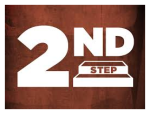 recruiting more people for a core team to work on this worthwhile goal. The second step is:
recruiting more people for a core team to work on this worthwhile goal. The second step is: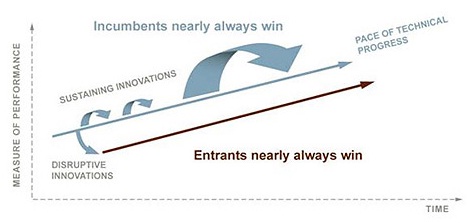

 Dilemma.” In the article, Christensen says:
Dilemma.” In the article, Christensen says: On Friday
On Friday I’ve recruited one person who tentatively agreed to work on a part of this project which focuses on area colleges and universities. My primary challenge in making the overall project a viable long term effort is finding three or four more NE Wisconsin people who want to put a decent amount of time and effort into the early stages of the project. Those three or four core team members can then help me recruit a couple more, and voilà ⇒ critical mass for the core team! 🙂
I’ve recruited one person who tentatively agreed to work on a part of this project which focuses on area colleges and universities. My primary challenge in making the overall project a viable long term effort is finding three or four more NE Wisconsin people who want to put a decent amount of time and effort into the early stages of the project. Those three or four core team members can then help me recruit a couple more, and voilà ⇒ critical mass for the core team! 🙂
 “Email is the probably the most important business communication tool, and unavoidable in working life today. In the fast-paced world of events, there seems to be a never ending stream of urgent emails demanding your immediate attention, especially nearing the time of the event. Before you chuck your computer out of the window, here are some easy tricks you can learn to
“Email is the probably the most important business communication tool, and unavoidable in working life today. In the fast-paced world of events, there seems to be a never ending stream of urgent emails demanding your immediate attention, especially nearing the time of the event. Before you chuck your computer out of the window, here are some easy tricks you can learn to  master your inbox, and modern tools to help you do it faster.
master your inbox, and modern tools to help you do it faster.

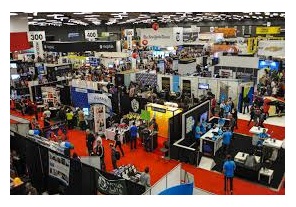
 that CEUs are the Fool’s Gold of Attendance Marketing…”
that CEUs are the Fool’s Gold of Attendance Marketing…”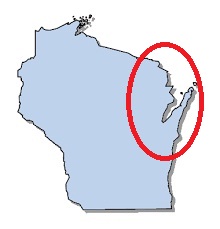 well-connected regional disruptive innovators network. That train of thought led me to write this Friday evening post about actively working on connecting disruptive innovators in the region.
well-connected regional disruptive innovators network. That train of thought led me to write this Friday evening post about actively working on connecting disruptive innovators in the region.

 with high amounts of bridging social capital (as opposed to primarily bonding social capital).
with high amounts of bridging social capital (as opposed to primarily bonding social capital).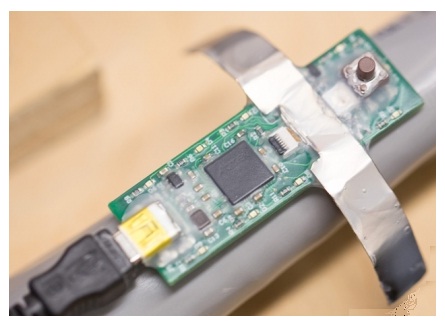 installation, self-calibrating, OwnYourData IoT philosophy).
installation, self-calibrating, OwnYourData IoT philosophy). working on these systems.
working on these systems.

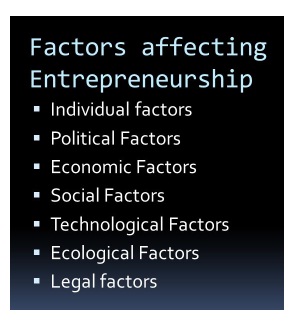
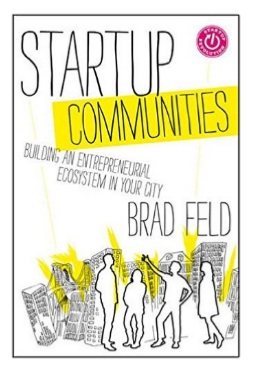 region’s culture. I’m not even aware of very many highly successful tech entrepreneurs in NE Wisconsin. It’s possible such a network exists, and my lack of knowledge about it is due to me not being a highly successful tech entrepreneur and not being seen as useful to the people in that network. And there may be many highly successful tech entrepreneurs in the region, but they just prefer to stay under the radar. Brad Feld of Foundry Group views a strong network of entrepreneurs who lead programs to be the key to building a highly entrepreneurial region.
region’s culture. I’m not even aware of very many highly successful tech entrepreneurs in NE Wisconsin. It’s possible such a network exists, and my lack of knowledge about it is due to me not being a highly successful tech entrepreneur and not being seen as useful to the people in that network. And there may be many highly successful tech entrepreneurs in the region, but they just prefer to stay under the radar. Brad Feld of Foundry Group views a strong network of entrepreneurs who lead programs to be the key to building a highly entrepreneurial region.
 of STEM education in America, and we absolutely have to make a formal, concerted effort to get more hard science into our classrooms. But we also shouldn’t overlook the many things outside the classroom that might kick off an active, lifelong interest in technology…that engage young people with technology in ways that draw on their natural independence and creativity…”
of STEM education in America, and we absolutely have to make a formal, concerted effort to get more hard science into our classrooms. But we also shouldn’t overlook the many things outside the classroom that might kick off an active, lifelong interest in technology…that engage young people with technology in ways that draw on their natural independence and creativity…”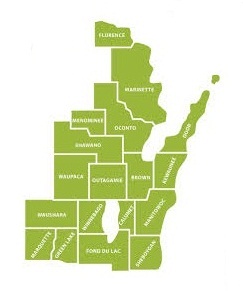 improving faster than NE Wisconsin are Madison, Milwaukee, Chicago, Minneapolis, Austin, Kansas City, Chattanooga, Ann Arbor, Champaign, Fort Collins, and Provo.
improving faster than NE Wisconsin are Madison, Milwaukee, Chicago, Minneapolis, Austin, Kansas City, Chattanooga, Ann Arbor, Champaign, Fort Collins, and Provo.
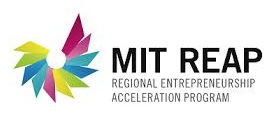
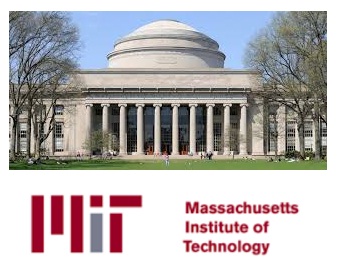 I’ve interacted quite a bit over the last ten years with the MIT Club of Wisconsin (MIT alumni who live in Wisconsin). They are a fantastic bunch of people, smartest bunch of interesting geeks I ever met. I haven’t had the opportunity to visit MIT yet, but hope to one day.
I’ve interacted quite a bit over the last ten years with the MIT Club of Wisconsin (MIT alumni who live in Wisconsin). They are a fantastic bunch of people, smartest bunch of interesting geeks I ever met. I haven’t had the opportunity to visit MIT yet, but hope to one day. If I could chose one university to work with on a wide variety of entrepreneurship issues, Stanford would be my choice. Stanford University has a better reputation than MIT in terms of tech entrepreneurship and being the source of highly-scalable startups. But MIT has also been the starting point for many startups and tech entrepreneurs.
If I could chose one university to work with on a wide variety of entrepreneurship issues, Stanford would be my choice. Stanford University has a better reputation than MIT in terms of tech entrepreneurship and being the source of highly-scalable startups. But MIT has also been the starting point for many startups and tech entrepreneurs. Who would the region’s representatives be on the MIT REAP team of 5 – 7 members? I’ve got a list of the people I would put on the team.
Who would the region’s representatives be on the MIT REAP team of 5 – 7 members? I’ve got a list of the people I would put on the team. “The move to make the recreational use of marijuana legal is gaining momentum—it’s now legal to spark up a spliff in Alaska, Colorado, Oregon, and Washington state. And legislation is on the November ballots in a number of other states as well, including California, Nevada, and New York.
“The move to make the recreational use of marijuana legal is gaining momentum—it’s now legal to spark up a spliff in Alaska, Colorado, Oregon, and Washington state. And legislation is on the November ballots in a number of other states as well, including California, Nevada, and New York.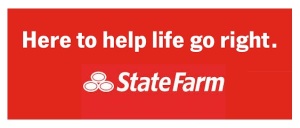
 conferences, product launches and exhibitions, place two bins near corresponding speech bubbles…”
conferences, product launches and exhibitions, place two bins near corresponding speech bubbles…” experience, its impact extends far beyond the life of the activation. Following are 10 pop-up strategies that turned temporary events into lasting impressions…”
experience, its impact extends far beyond the life of the activation. Following are 10 pop-up strategies that turned temporary events into lasting impressions…”
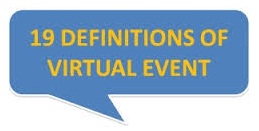 [ALT] + [DEL]…”
[ALT] + [DEL]…”